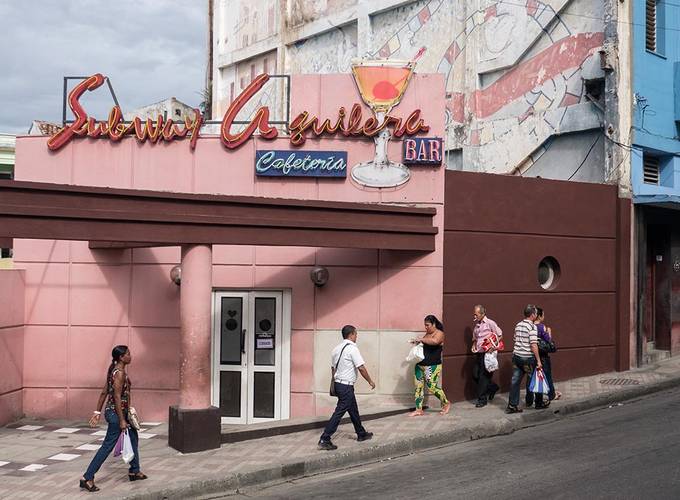Notes from Cuba
When we knocked on Yamile's door holding a highlighted piece of paper with her address on, she smiled and helped us find somewhere to stay in Viñales. "Mucho turismo! Muchos turistas!" She told us each morning as she called out to her neighbours to see who had a room for us.
On our third night she arranged for us to stay at Casa El Campesino. She led us there along a mud track through the back of town, prodding two tethered bulls out of our path with a stick and climbing through a barbed wire gate. As we approached, there was barking and a hand-painted sign that said HAY PERRO MUERTE (There is a dog. Death!). Colin jumped back in surprise and Yamile burst out laughing, calling out to our new hosts.
We were shown to a spare bedroom off the living room with bare walls, colourful wool blankets and a small fan.
Later that evening we sat on the porch as a man rode up on a horse and introduced himself as Senobio. Laughing and chiding us for our bad Spanish, he slowly explained that he owned the farm and that his wife might be the best cook in Cuba.
And that night we had a home-cooked meal with produce from the farm, salty manioc fries, black bean soup, sweet fried plantains and buttery lobster. She may just be.
**
The Boulevard in Santa Clara is a tree-lined pedestrianised street where people come to stroll and shop and eat. Halfway down is an art cafe.
The first time we passed there was a small crowd gathered just beyond the glass-fronted entrance. Tall, thin men with mohawks, two girls dressed in baggy black t-shirts with shaved heads and an older man in a ripped yellow vest who couldn't stop smiling. They are Los Frikis.
The Cuban punk scene started in the 1980s and quickly turned into a way to rebel against socialism. The government disapproved and the movement went underground, with some frikis deliberately injecting themselves with HIV as a form of protest. These days it's an accepted part of youth culture and Santa Clara is the home of Cuban punk.
On the walls of the gallery were dark photographs of punk gigs, close up shots of the audiences and the bands. A woman offered small glasses of dark rum to the group to celebrate the exhibition opening.
The annual rock festival started that night in venues around the city, with music so loud we could hear it in our room as we prepared for our long bus journey east.
**
As we walked from our suburban casa into the centre of Santiago de Cuba, through clouds of pollution from the 1960s diesel cars, almost everyone we passed was carrying slices of pizza.
They come from Cafeteria Marylin, an open-fronted shop with a permanent queue snaking around the counter. School children, men in shirts carrying briefcases, young couples; peso pizza is popular with everyone. Every now and again a passerby stops to chat with someone they know in the queue.
There aren't many opportunities to eat with locals in Cuba. Restaurants are usually for tourists, too expensive for most Cubans to afford. But peso pizza is an exception.
Behind the counter three round trays of pizzas come out of the oven. The slices disappear fast as people request un, dos, even cuatro, and more pizzas go in the oven.
We reach the front and hand over 5 CUPs (10 cents) for two slices on a roughly cut piece of cardboard. The pizza has a thick, doughy base, fresh tomato sauce and a sprinkling of cheese – it's surprisingly good. Our cheapest meal in Cuba.
—Yasmine
